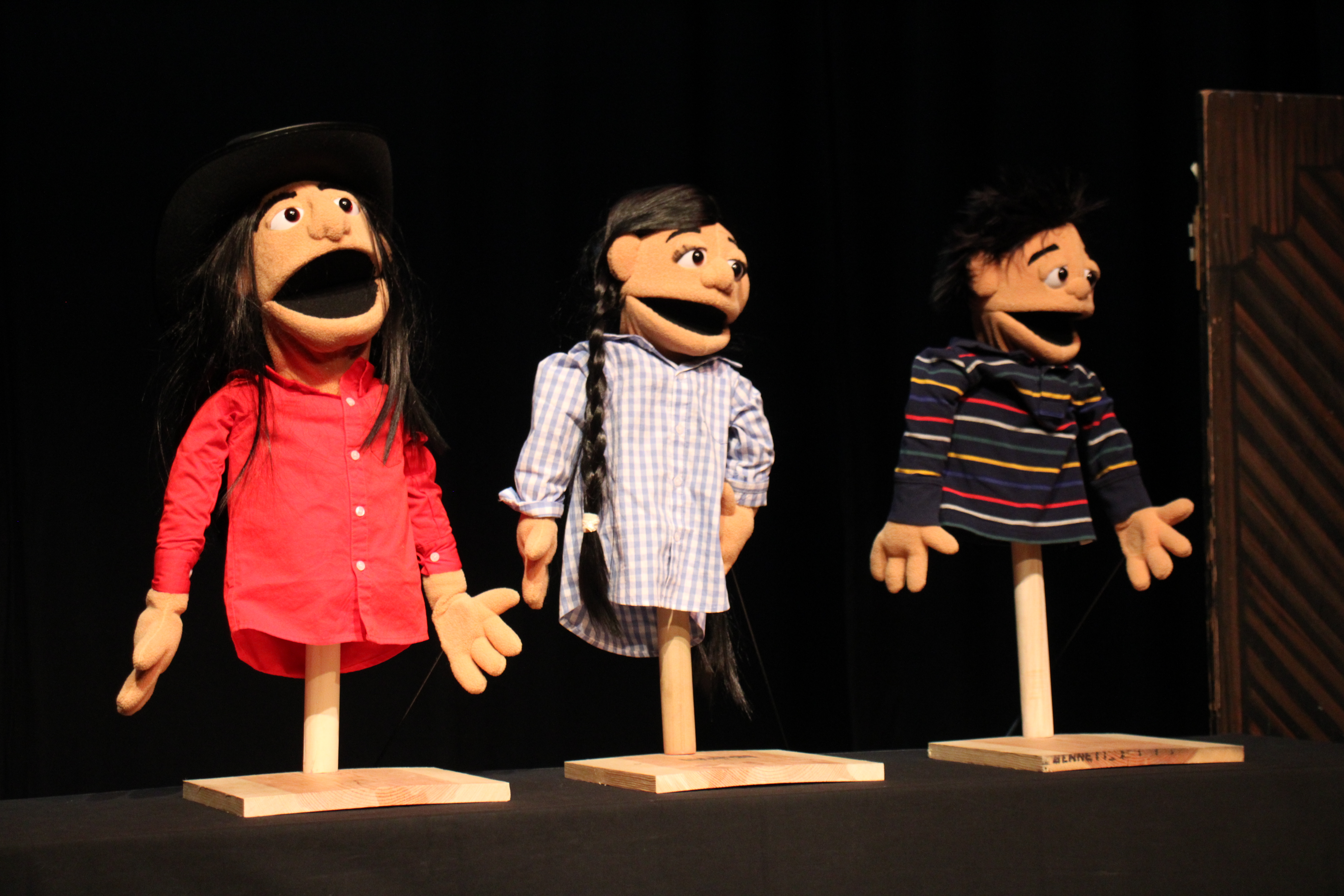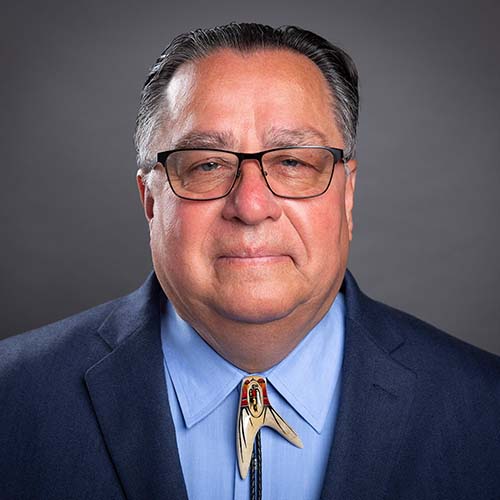
- Details
- By Darren Thompson
Sands’ performance drew a diverse crowd that Great Arizona Puppet TheaterInterim Executive Director Jeffrey Lazos Ferns says is reflective of a shared interest in language preservation.
“Pete Sands’ love for his community, its language, and culture transfers and translates to his body of work,” Ferns told Native News Online. “The turnout in audiences from all sectors of the community is evidence that the show captures not only the imagination but also a need and desire in the community for language preservation.”
Sands’ journey with puppetry began during in 2020 COVID-19 pandemic. That year, he was recognized by Time Magazine as one of its “Guardians of the Year” for creating the Utah Navajo Health System’s COVID-19 Relief effort to deliver food, firewood, and water to thousands on the Navajo Reservation.
Sands created a puppet show with one puppet in 2020, hoping that he could make learning about Navajo culture and language fun for children. Because the Navajo Nation was heavily affected by the COVID-19 pandemic, learning for school children was extremely limited. While running the COVID-19 Relief effort during the pandemic, he saw a barrier between generations in homes on the Navajo reservation and wanted to change that.
Because there is no word for “puppet” in the Navajo language, Sands named his show “Navajo Highways.” Navajo Highways portrays a family of Navajo puppets where the children learn about their culture through language. His inspiration came from travels to Manhattan, where he was on the production set of “Sesame Street.”
“When I saw how the puppets came alive and how adults learned along with children, I thought I could do this back home,” said Pete Sands to Native News Online.
So, he launched a GoFundMe to raise funds for producing a television show titled “Navajo Highways” to showcase a Navajo family learning — Sadie, Ash, Grandma Sally and Uncle Al — from each other.
“Young kids are learning Navajo, and the adults can learn too,” Sands said of Navajo Highways.
He’s not the only talent in the show, though. He uses others, including youth and a Navajo language teacher, who voices Grandma Sally and is the host of the show. Together, they show others what life is like on the Navajo Indian Reservation, the nation’s largest Indian reservation in the country at more than 27,000 square miles.
Great Arizona Puppet Theater theater hosts a variety of shows, but not many Indigenous-themed puppet shows. Puppetry has a long history among many groups of people throughout the world for storytelling.
“We look forward to hosting him and Navajo Highways again at the Great Arizona Puppet Theater,” Ferns said of Pete Sands.
More Stories Like This
Zuni Youth Enrichment Project Takes Top Emerging Artist Apprentices to Phoenix for Artistic Exploration and Cultural ImmersionFrom Dishwasher to Award-Winning Chef: Laguna Pueblo's Josh Aragon Serves Up Albuquerque's Best Green Chile Stew
Rob Reiner's Final Work as Producer Appears to Address MMIP Crisis
Vision Maker Media Honors MacDonald Siblings With 2025 Frank Blythe Award
First Tribally Owned Gallery in Tulsa Debuts ‘Mvskokvlke: Road of Strength’
Help us defend tribal sovereignty.
At Native News Online, our mission is rooted in telling the stories that strengthen sovereignty and uplift Indigenous voices — not just at year’s end, but every single day.
Because of your generosity last year, we were able to keep our reporters on the ground in tribal communities, at national gatherings and in the halls of Congress — covering the issues that matter most to Indian Country: sovereignty, culture, education, health and economic opportunity.
That support sustained us through a tough year in 2025. Now, as we look to the year ahead, we need your help right now to ensure warrior journalism remains strong — reporting that defends tribal sovereignty, amplifies Native truth, and holds power accountable.
 The stakes couldn't be higher. Your support keeps Native voices heard, Native stories told and Native sovereignty defended.
The stakes couldn't be higher. Your support keeps Native voices heard, Native stories told and Native sovereignty defended.
Stand with Warrior Journalism today.
Levi Rickert (Potawatomi), Editor & Publisher

